When it comes to the hottest deserts in the world, prepare to step into a realm of relentless sun, scorching sands, and jaw-dropping extremes. This rundown of the top ten hottest deserts explores the planet’s most unforgiving landscapes, where desert temperatures climb to levels that defy imagination. Picture the endless golden expanse of the Sahara, Africa’s crown jewel of heat, or the sizzling floor of Death Valley, a place that’s earned its reputation as one of the world’s hottest places. These aren’t just barren wastelands; they’re iconic arid landscapes shaped by nature’s fiercest forces.
From the Middle East’s brutal Lut Desert, where the ground itself seems to melt, to Australia’s fiery Simpson Desert, painted red by the sun, each entry on this list of the top ten deserts brings something extraordinary to the table. You’ll discover record breaking heat stats, like temperatures pushing past 130 degrees Fahrenheit, alongside fascinating details about the geography, wildlife, and cultures that somehow thrive in these extreme heat zones. Whether you’re a traveler dreaming of adventure, a geography buff hooked on facts, or just someone curious about Earth’s wild side, this guide to the hottest deserts in the world delivers it all. Get ready for a journey through sunscorched plains, towering dunes, and rugged terrains that define the ultimate desert experience. These are the top ten hottest deserts, where the sun rules supreme and every corner tells a story of survival against the odds
The Top Ten Hottest Desert In The World
10. Kalahari Desert
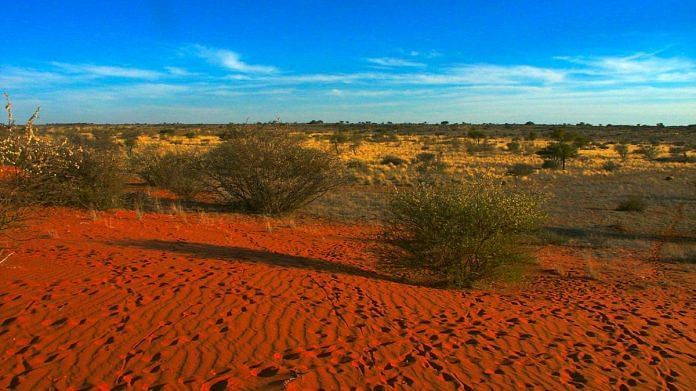
Spanning roughly 900000 square kilometers across Southern Africa, including parts of Botswana, Namibia, and South Africa, the Kalahari Desert kicks off the list of the world’s hottest deserts. This semi arid expanse sees summer temperatures frequently climb above 35°C (95°F), with some areas hitting highs near 40°C (104°F) during the peak heat months from December to February. Unlike the stereotypical barren desert, the Kalahari boasts a reddish sandy terrain dotted with acacia trees, thorny shrubs, and patches of dry grasslands. Its name comes from the Tswana word “Kgala,” meaning “great thirst,” a nod to its parched conditions despite receiving 5 to 9 inches of rain annually, more than some drier deserts. This rainfall supports a surprising array of wildlife, including Kalahari lions, meerkats, springboks, and ostriches, all adapted to the relentless heat and scarce water. The Central Kalahari Game Reserve, one of the largest wildlife sanctuaries globally, lies within its borders, showcasing its ecological richness. Ancient San people have thrived here for millennia, mastering survival in this sun scorched land. The Kalahari’s mix of extreme heat and unexpected biodiversity makes it a standout among the hottest deserts.
9. Simpson Desert
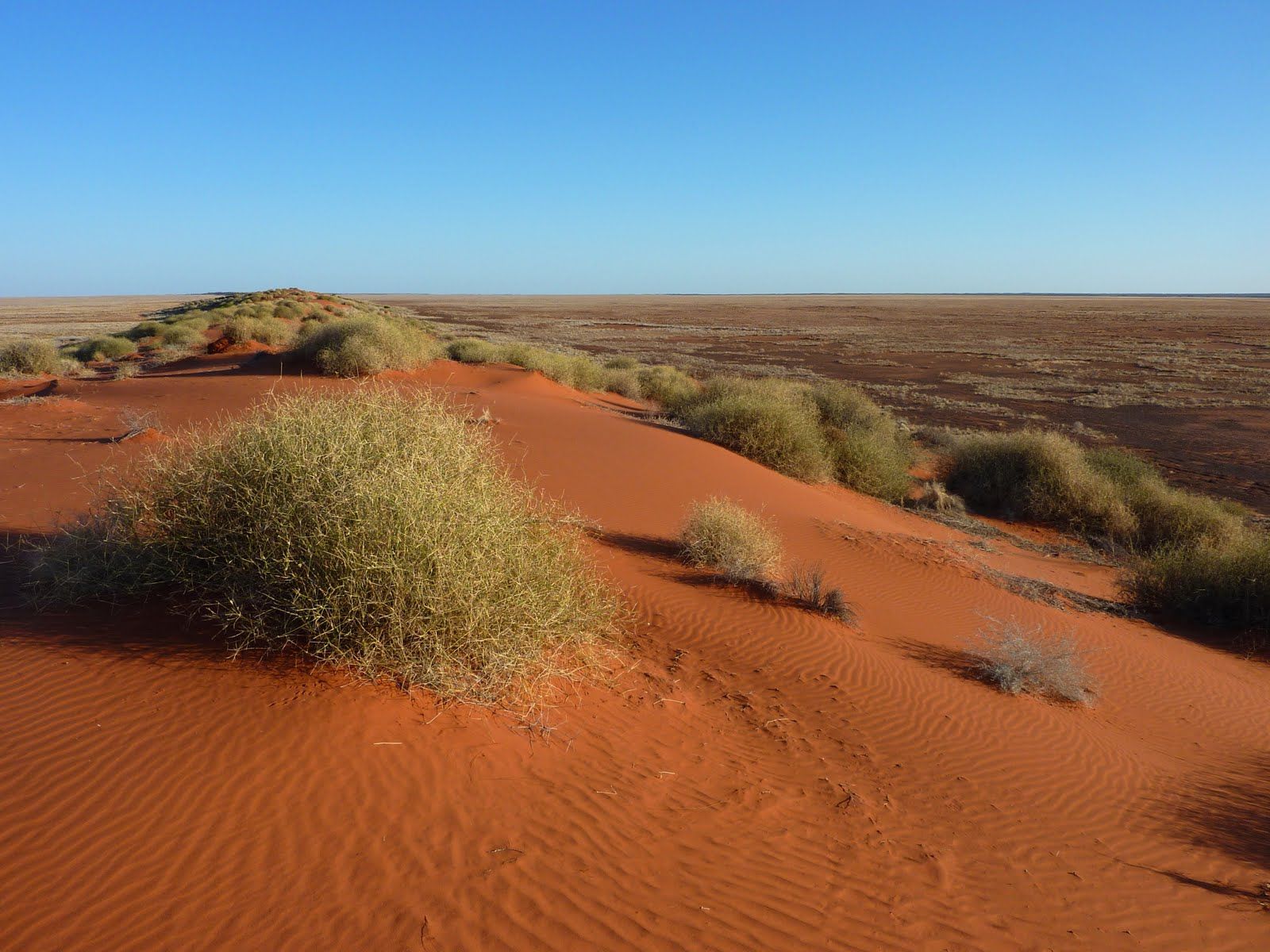
Next up is the Simpson Desert, a fiery red expanse covering 170000 square kilometers in central Australia. Summer temperatures here, peaking from December to March, can soar to 45°C (113°F), with the mercury occasionally pushing even higher in unshaded areas. Known for its striking parallel sand dunes, some stretching over 200 kilometers long and reaching heights of 40 meters, this desert paints a vivid picture of arid beauty. The dunes, colored by iron oxide, shimmer under the blazing sun, while sparse vegetation like spinifex grass and saltbush clings to life in the sandy soil. Despite the brutal desert temperatures, the Simpson supports a resilient ecosystem, home to creatures like the bilby, a small marsupial with oversized ears, and the thorny devil lizard, perfectly camouflaged against the red earth. Rainfall averages less than 150 millimeters annually, often arriving in sporadic bursts that briefly transform the landscape with wildflowers. Indigenous groups, such as the Wangkangurru people, have navigated this harsh terrain for thousands of years, relying on deep knowledge of waterholes and seasonal shifts. The Simpson Desert’s scorching heat and rugged charm cement its place among the top ten deserts.
8. Taklamakan Desert

Covering over 300000 square kilometers in northwest China’s Xinjiang region, the Taklamakan Desert ranks eighth among the hottest deserts in the world. Summer highs from June to August regularly reach 45°C (113°F), amplified by its vast shifting sand dunes that dominate 85% of its surface. Often called the “Sea of Death,” its name hints at a foreboding past, some translate it as “place of no return,” a testament to its treacherous heat and isolation. Nestled in the Tarim Basin, surrounded by the towering Tian Shan, Kunlun, and Pamir mountain ranges, this desert traps heat while blocking moisture, creating one of the planet’s most extreme arid landscapes. The Flaming Mountains, a jagged red sandstone range within its borders, once recorded a blistering 66.8°C (152°F) via satellite in 2008, showcasing its capacity for intense heat. Sparse life exists here, wild camels, gazelles, and small rodents like jerboas eke out survival near rare oases. Historically, the Taklamakan was a perilous stretch of the Silk Road, with ancient cities like Niya buried beneath its sands, preserving 4000 year old mummies. Its combination of scorching desert temperatures and haunting history makes it a formidable entry.
7. Chihuahuan Desert
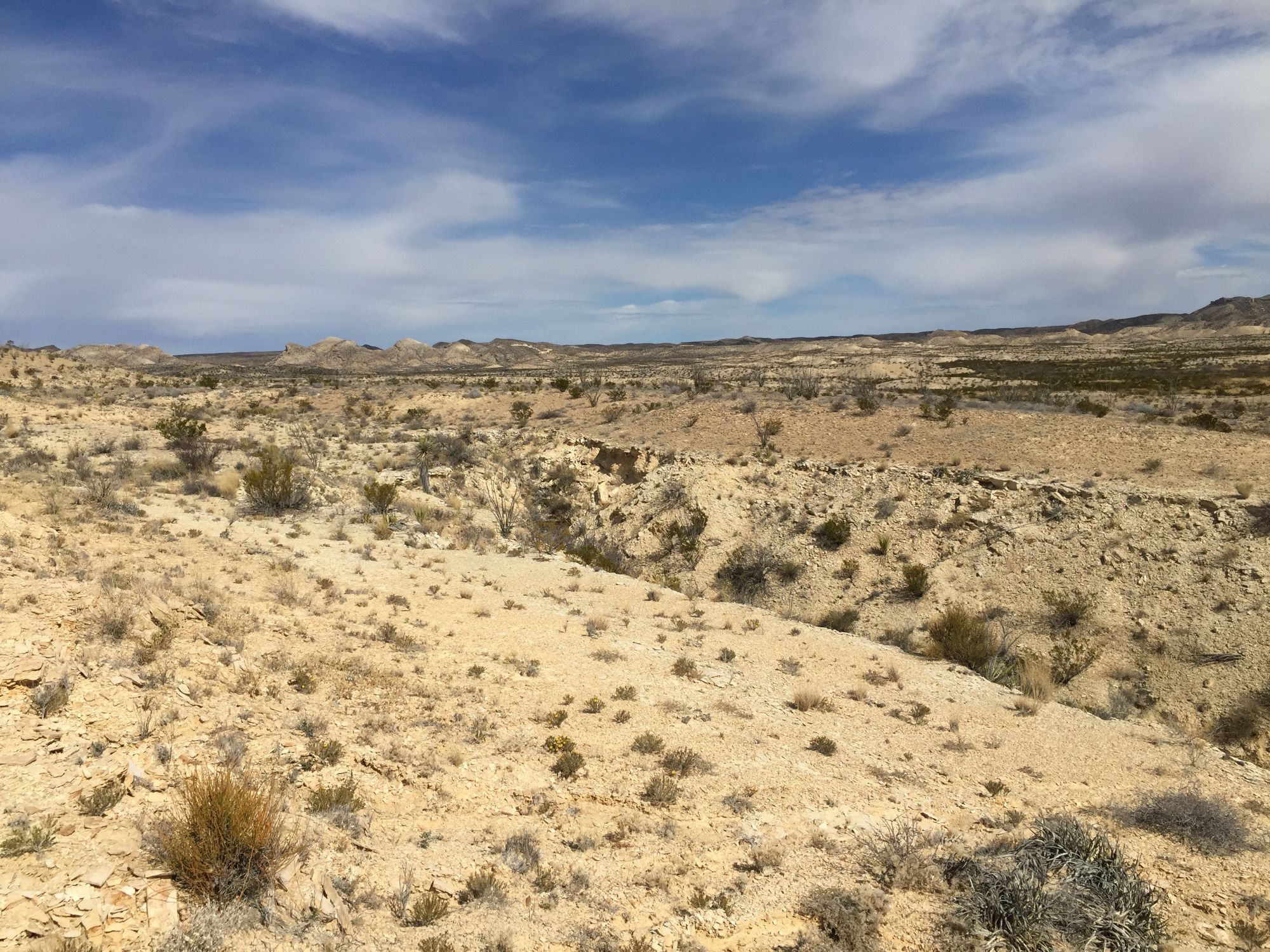
The Chihuahuan Desert, sprawling across 362000 square kilometers in southwestern United States and northern Mexico, claims the seventh spot. Summer temperatures average 35 to 40°C (95 to 104°F), with peaks hitting 43°C (109.4°F) in areas like Big Bend National Park in Texas. Stretching from New Mexico and Arizona down to Chihuahua and Coahuila, this desert sits at higher elevations, often 1000 to 2000 meters, than many others, yet its heat remains unrelenting. Its landscape blends rocky plains, arid grasslands, and mountain ranges like the Sierra Madre Occidental, dotted with over 300 species of cacti, including the iconic prickly pear and agave. Creosote bushes perfume the air, while wildlife like roadrunners, Mexican wolves, and black tailed jackrabbits thrive despite the arid conditions. Annual rainfall hovers around 235 millimeters, mostly from summer monsoons, briefly greening the desert with wildflowers. Known as a “rain shadow desert,” it’s shielded from Pacific moisture by surrounding peaks, intensifying its dry, hot climate. Indigenous peoples and Spanish settlers have left their mark, with ancient petroglyphs and colonial ruins scattered across this sun baked expanse. The Chihuahuan’s extreme heat and biodiversity make it a standout among the world’s hottest places.
6. Lut Desert
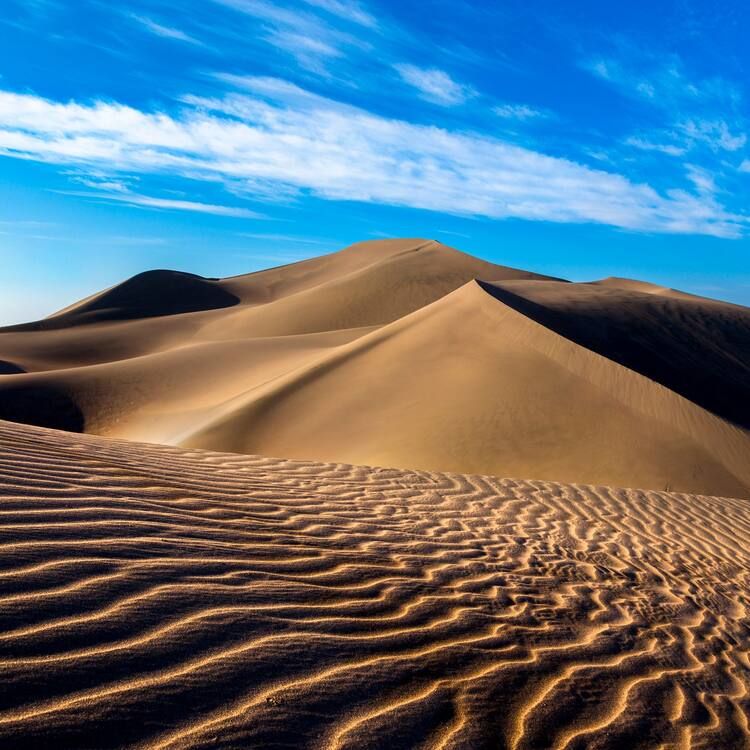
Iran’s Lut Desert, or Dasht e Lut, covering about 51800 square kilometers, ranks sixth and is one of the most extreme arid landscapes on Earth. Summer air temperatures average around 40°C (104°F), but its dark, heat absorbing salt flats and rocky surfaces have hit a staggering 70.7°C (159.3°F), the highest land surface temperature ever recorded by satellite. This compact yet ferocious desert lies in southeastern Iran, flanked by the Zagros Mountains, and features dramatic yardangs, wind carved ridges, and vast salt plains that amplify its oven like conditions. Rainfall is nearly nonexistent, averaging less than 30 millimeters yearly, making it one of the driest spots globally. Despite the brutal heat, small pockets of life persist, including desert foxes and rare insects adapted to the salty crust. Recognized as a UNESCO World Heritage Site in 2016, the Lut dazzles with its geological wonders, like massive sand dunes and rippled formations sculpted by fierce winds. Ancient caravan routes once crossed its edges, but few dared linger in its core. The Lut Desert’s record breaking desert temperatures and alien like terrain secure its place among the top ten hottest deserts.
5. Thar Desert
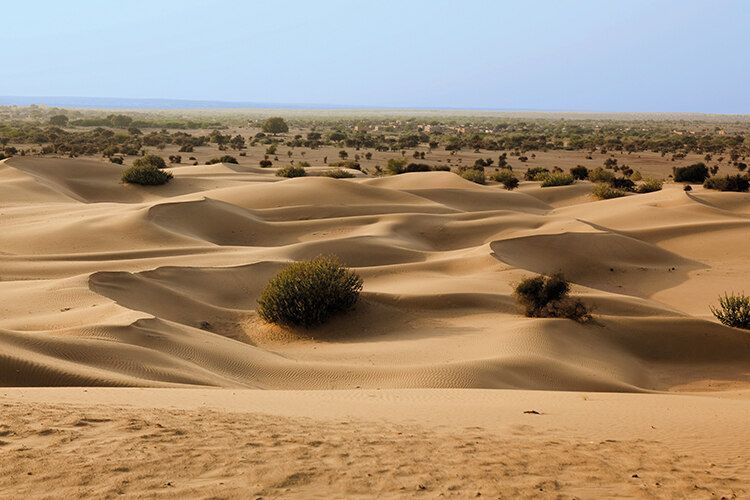
The Thar Desert, also called the Great Indian Desert, spans 200000 square kilometers across northwest India and eastern Pakistan, landing at number five. Summer temperatures from May to July often climb to 45°C (113°F), with some areas nearing 50°C (122°F) under the unrelenting sun. Stretching across Rajasthan and Punjab, this desert forms a natural border between the two nations, its golden sand dunes rising up to 150 meters high. Despite its aridity, rainfall ranges from 100 to 500 millimeters annually, it’s the most densely populated desert on Earth, home to over 80 people per square mile. Camels roam alongside blackbucks and chinkaras, while scrubby vegetation like khejri trees and desert grasses dots the landscape. The Thar pulses with cultural vibrancy, hosting festivals like the Pushkar Camel Fair, where music and dance echo through the dunes. Evidence of a prehistoric ocean lies beneath its sands, with marine fossils hinting at its watery past. Its blend of extreme heat, thriving communities, and geological secrets makes the Thar a unique entry among the hottest deserts in the world.
4. Sahara Desert
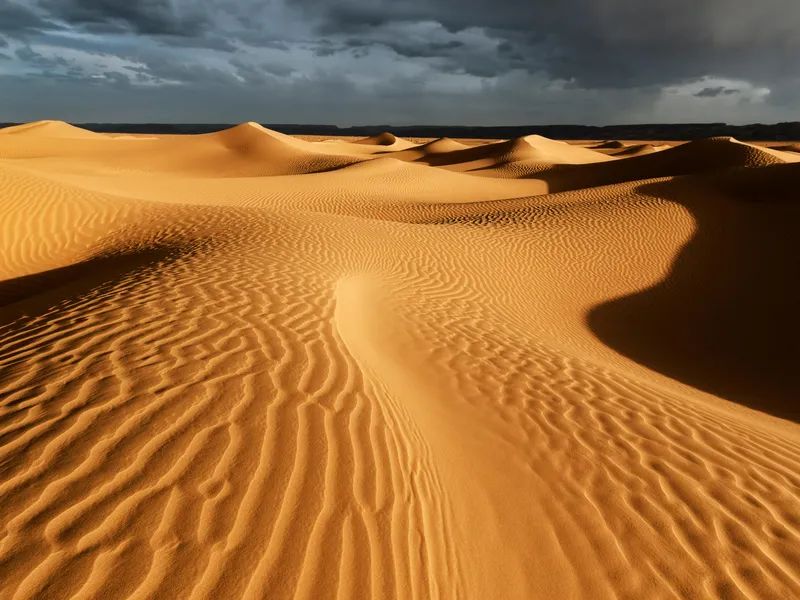
The Sahara Desert, the largest hot desert on the planet, sprawls over 9200000 square kilometers across North Africa, claiming fourth place. Summer temperatures regularly exceed 50°C (122°F), especially in its central regions like Libya’s Al Azizia, once thought to have hit 58°C (136.4°F) in 1922. Covering countries like Egypt, Algeria, Chad, and Morocco, this colossal arid landscape features endless sand seas, rocky hamadas, and occasional oases fed by underground aquifers. Rainfall is scarce, averaging less than 25 millimeters annually, though rare storms can unleash flash floods. Iconic dunes like Erg Chebbi tower over 150 meters, while the Atlas and Tibesti Mountains add rugged contrast. Life persists here, fennec foxes, addaxes, and scorpions roam alongside nomadic Tuareg and Berber tribes who’ve mastered survival in this sun scorched expanse. Ancient trade routes crisscrossed its sands, linking empires and leaving behind rock art and ruins. The Sahara’s sheer size, blistering desert temperatures, and timeless allure make it a titan among the world’s hottest places.
3. Arabian Desert

Encompassing much of the Arabian Peninsula, the Arabian Desert ranks third, with summer highs reaching 50°C (122°F) across its vast, undefined expanse, estimated at over 2300000 square kilometers. Spanning Saudi Arabia, Yemen, Oman, and beyond, this desert broils from June to August, its heat intensified by the Rub al Khali, or Empty Quarter, the largest continuous sand desert on Earth. Temperatures here can spike past 54°C (129°F) in direct sunlight, while coastal humidity adds a stifling edge. Towering dunes rise 250 meters, dwarfing sparse acacia and saltbush, while oil rich bedrock fuels modern cities like Riyadh. Wildlife includes Arabian oryx, sand cats, and dromedary camels, all built for the arid extremes. Rainfall averages under 100 millimeters, often vanishing into the parched ground. Ancient Bedouin traditions thrive alongside fossilized coral reefs, remnants of a submerged past. The Arabian Desert’s scorching heat, cultural depth, and geological wealth make it a powerhouse among the top ten deserts.
2. Sonoran Desert
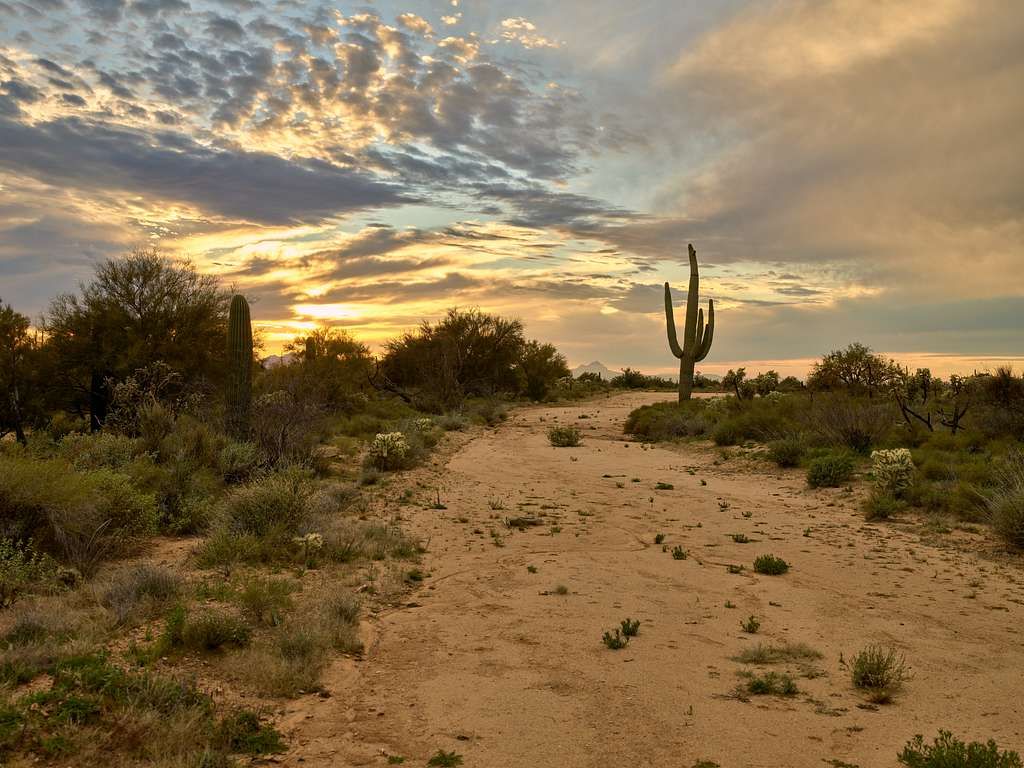
The Sonoran Desert, covering 260000 square kilometers across southwestern United States and northwest Mexico, takes second place. Summer temperatures average 40 to 45°C (104 to 113°F), with highs hitting 48°C (118.4°F) in Arizona’s lowlands from June to September. Stretching from California to Sonora, this desert is a biodiversity hotspot, famed for its towering saguaro cacti, some growing over 12 meters tall, and monsoon rains that deliver 90 to 300 millimeters annually. Its terrain varies from sandy flats to rocky uplands, with mountain ranges like the Santa Catalinas framing the horizon. Creosote bushes and palo verde trees scent the air, while desert bighorn sheep, Gila monsters, and jaguars roam its wilds. The summer monsoons briefly transform it into a floral spectacle, with ocotillo and prickly pear bursting into bloom. Indigenous Tohono O’odham and Pima peoples have long called it home, their traditions tied to its rhythms. The Sonoran’s lushness amid extreme heat sets it apart among the hottest deserts in the world.
1. Mojave Desert
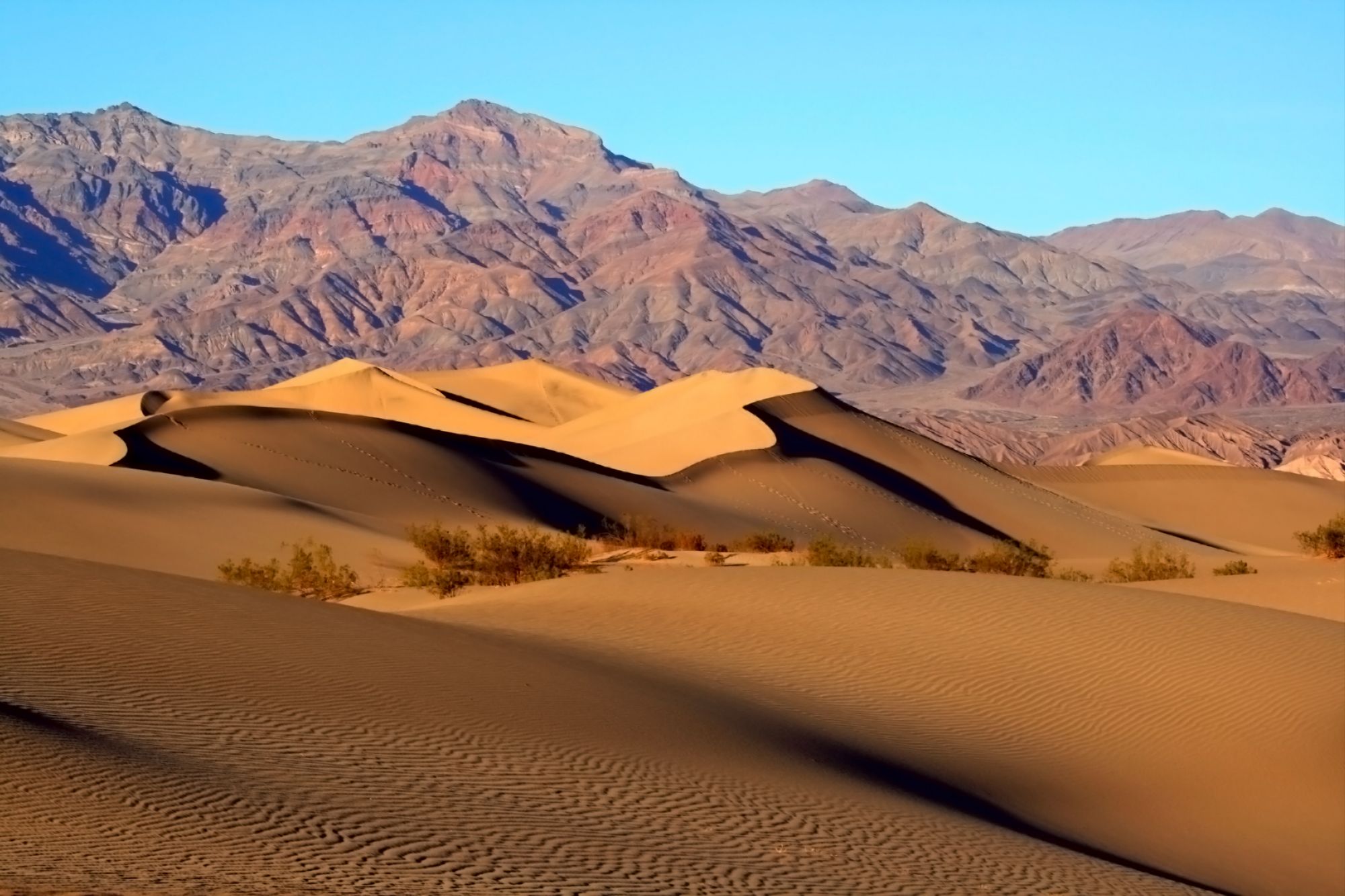
Topping the list is the Mojave Desert, a 124000 square kilometer inferno in the United States, spanning California, Nevada, Arizona, and Utah. Home to Death Valley, it holds the world record for the highest air temperature, 56.7°C (134°F), recorded on July 10, 1913, at Furnace Creek, with modern highs like 54.4°C (130°F) in 2020 reaffirming its reign. Summer averages hover around 46°C (115°F), fueled by its below sea level basin and the Sierra Nevada’s rain blocking shadow. Joshua trees, with their twisted limbs, define its landscape, alongside sand dunes, salt flats, and rugged peaks like the Panamint Range. Rainfall dips below 150 millimeters yearly, evaporating fast in the triple digit heat. Life adapts ingeniously, kangaroo rats, desert tortoises, and kit foxes endure the extremes. Native Paiute and Shoshone tribes once thrived here, leaving petroglyphs etched in stone. From Badwater Basin’s salty depths to Telescope Peak’s heights, the Mojave’s record breaking desert temperatures and stark beauty crown it the hottest desert in the world.




